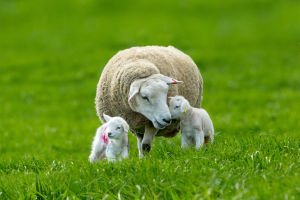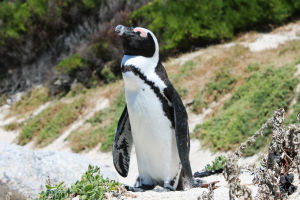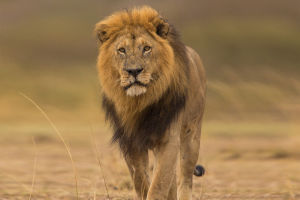Rabbits, or Leporidae, are one of nature's most remarkable creatures. These small mammals are found across various regions of the world, from the Eurasian continent to the Americas.
With their delicate features, rapid reproduction rates, and unique survival strategies, rabbits play a crucial role in many ecosystems. But what makes them truly fascinating? Let's explore the world of rabbits and uncover their incredible abilities.
A Global Presence
Rabbits are among the most widely distributed animals on the planet. Species like the European rabbit (Oryctolagus cuniculus) and the North American cottontail (Sylvilagus) have adapted to different environments and are now an integral part of many ecosystems. Not only are they wild animals, but they have also been domesticated by humans for thousands of years, contributing to agriculture and even becoming pets. Their adaptability allows them to thrive in a variety of habitats, from grassy plains to forested areas, and even urban landscapes.
Survival of the Fittest: The Rabbit's Physical Adaptations
Rabbits are designed for survival. Their wide field of vision and acute hearing help them detect predators from a distance, while their powerful hind legs allow for impressive leaps and rapid escapes. In fact, their long ears are not just for hearing; they help regulate body temperature by dispersing heat. This combination of physical features ensures that rabbits are always on high alert, even while they sleep with their eyes partially open. Their ability to react quickly to threats has made them an important prey species in many food chains, providing sustenance to a variety of predators.
Speed and Agility: Escape Artists of the Animal Kingdom
One of the most impressive traits of rabbits is their ability to escape danger. Their strong hind legs are much longer than their front ones, giving them the speed and agility needed to evade predators. Whether jumping to great heights or sprinting at high speeds, rabbits are capable of outrunning most threats. In addition to their impressive physical abilities, they also rely on their keen senses to detect danger, making them incredibly hard to catch.
Reproduction: The Rabbit’s Ability to Multiply
Rabbits are known for their rapid reproduction. They have a short gestation period of about 28 to 31 days, and a single litter can contain up to 12 babies. This high reproductive rate helps maintain their population, especially in areas where they face few natural predators. While the mortality rate for young rabbits is high, the sheer number of offspring ensures that the species continues to thrive. In some ecosystems, particularly in places like Australia, rabbits' rapid breeding has led to overpopulation, causing significant environmental damage.
Ecological Role and Challenges
While rabbits are crucial members of many ecosystems, their abundance can sometimes become problematic. In areas where natural predators are absent or in ecosystems that lack sufficient resources, rabbits can overpopulate. This can lead to the depletion of vegetation and other ecological imbalances. However, in places where they are kept in check by predators, rabbits contribute to the food web by providing nourishment to a variety of carnivores.
More Than Just a Bunny
In conclusion, rabbits are much more than just cute, fluffy creatures. Their ability to survive, adapt, and reproduce at rapid rates makes them one of the most successful species on Earth. From their physical adaptations to their role in ecosystems, rabbits continue to amaze us with their ingenuity and resilience. Whether in the wild or as pets, rabbits hold a special place in the natural world.
So, next time you see a rabbit hopping along, remember that this small creature is an engineering marvel, perfectly designed to survive and thrive in the ever-changing world around us.
Cute Baby Rabbits Playing,Feeding Activities | Bunny Rabbit (Baby Rabbits)
video by Birds And Animals Planet


